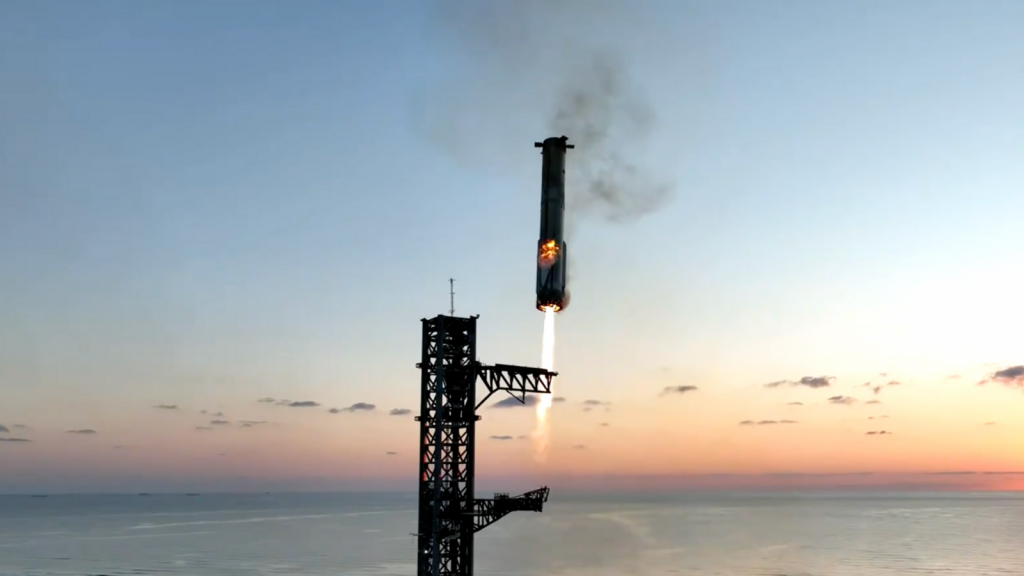Earlier this week SpaceX achieved a new milestone in its quest for reusable rockets — it caught the 71-metre tall Super Heavy booster that sent the fifth version of Starship into orbit (for testing reasons). That’s not an easy feat to pull off, since it’s the equivalent of catching a fifteen-story building. That’s on fire. But the company intends to do even better.
According to company head Elon Musk, the next achievement being targeted is to catch Starship itself. The timeline for that is, optimistically, early next year according to Musk.
SpaceX reaches for the stars
Hopefully early next year, we will catch the ship too
— Elon Musk (@elonmusk) October 15, 2024
The most recent launch saw the rocket drop into the Indian Ocean, a destructive mission intended to gather data about its performance. Technically, every Starship mission to date has been a destructive one. It’s just that this one was on purpose. But the aim is to make every bit of the Starship reusable and that means landing one in Earth’s gravity at some point.
Can SpaceX do it? It seems impossible to catch a 50-metre tall rocket but it also seemed impossible to do the same with the Super Heavy booster. Until it wasn’t. There are additional challenges, though. The booster has more Raptor engines to work with to slow the craft down, though it doesn’t use all 33 for the task.
Starship’s upper stage will have between six and nine engines to slow the pointy part of the rocket down enough to prevent an unscheduled rapid disassembly. It’s achievable. The company has technically already landed one but only under test conditions and not from the heights an orbital Starship will fall. Decelerating and catching SpaceX’s supersized spacecraft will take some doing but, if it can be done, it’ll be another step toward interplanetary travel.




